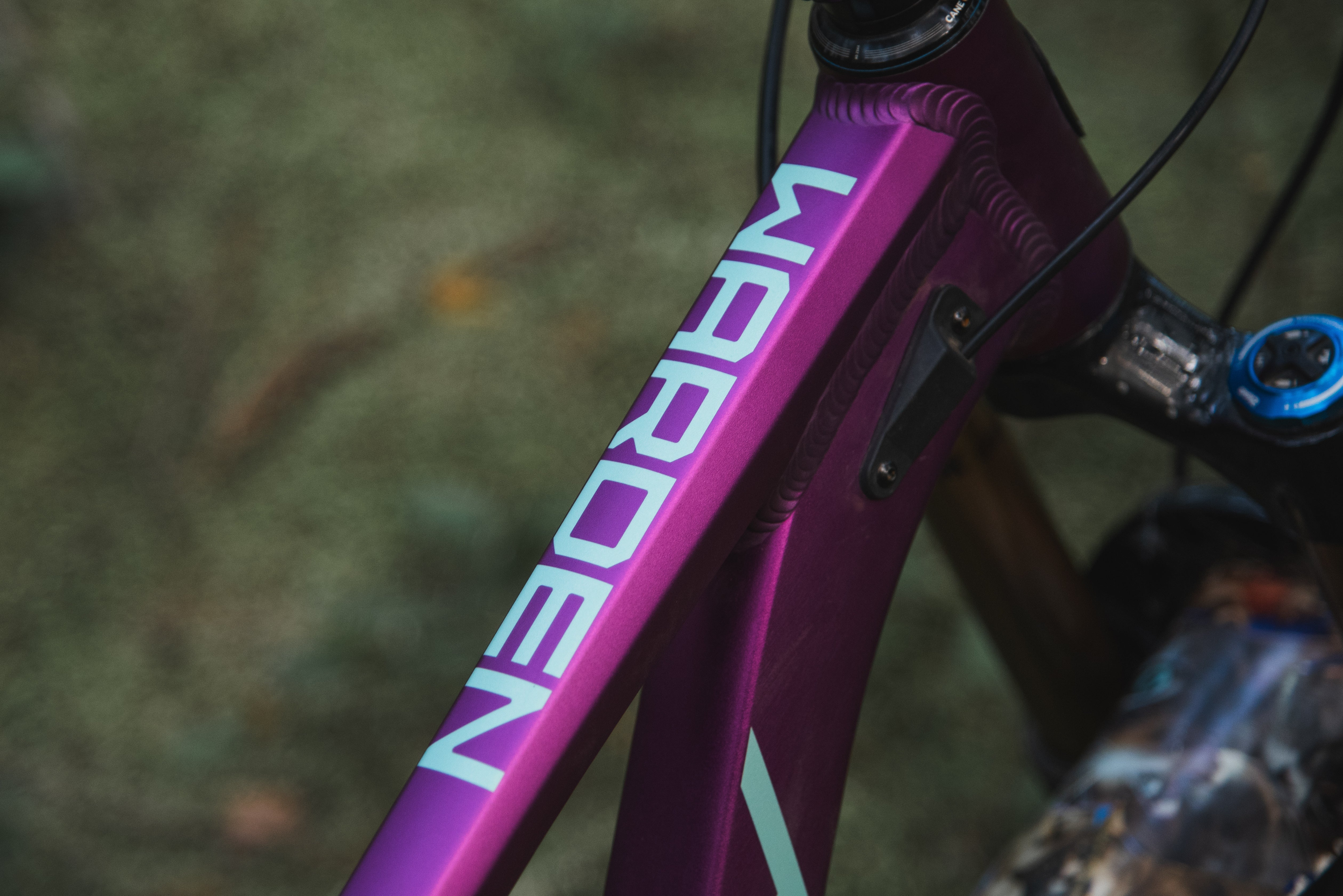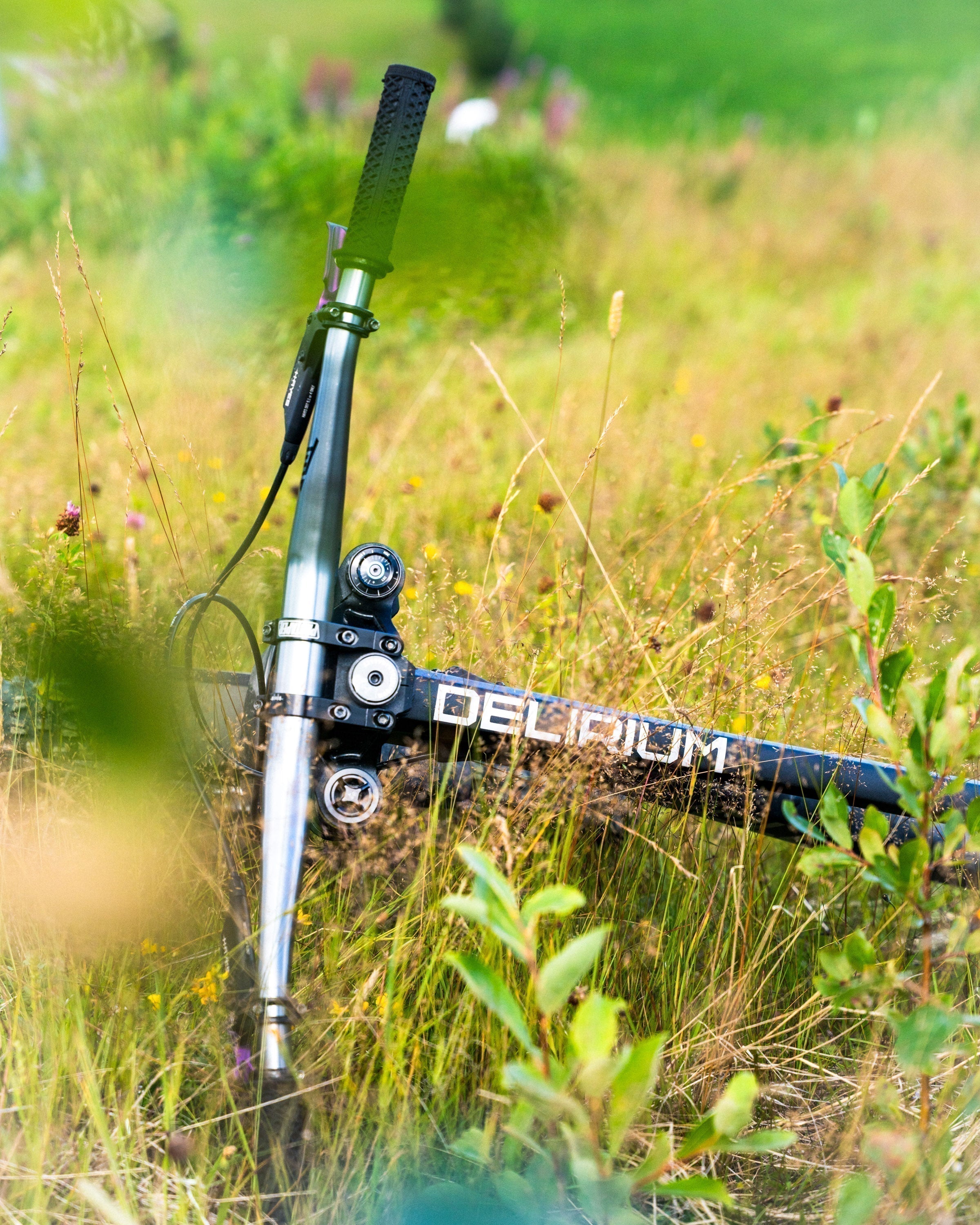by Noel Buckley
Why didn’t Knolly adopt 148mm Boost?
When Boost 148 was launched, we chose to remain on the sideline because we were not convinced it was right. At Knolly our design philosophy ensures that any performance feature change needs to be supported by a valid engineering position and proven rider performance benefits. And we were right to wait.
When 148 Boost was created, it was designed to help fix a problem with 29er wheel sets and it was marketed as "a huge improvement in stiffness". It was simply the widest possible hub width that could be implemented while maintaining normal Q-factors of existing 2x10 speed drivetrains and it was limited width wise by the rear stays of certain suspension designs. It was also designed to support the needs of 2x10 systems and keep Q factors narrow. This is why it only expanded the chain line by 3mm. Why not 4mm, 5mm, or even 7mm? It was because of the constraints of 2x10 and narrow Q Factors. Boost 148 was then adopted as a solution by the "plus size" tire community because it gave another 3mm of tire clearance per side. Unfortunately, it did not solve all the tire size issues. And in 2013 and certainly by 2014, 2x10 was a distant memory; it was all about 1x11 with 10 42T cassettes. So why 157Trail?
So why 157Trail?
We should remember that the 12x157 standard isn't "new". It's been around for close to 20 years and was originally the 12x150mm DH standard developed in the early 2000's and then evolved into the 12x157mm DH standard post 2010. Both 150 and 157 use the same hub & chain line standard, they just have different end caps. The 157mm hub width has an extra 7mm of width to support the "3.5mm shelf" in each dropout used to transfer wheel loads from the 12mm frame axle to the larger 19mm diameter hub axle. This is the same way that the current 142mm width (still used on some mountain bikes and very dominate in road/gravel) was akin to the earlier 135mm. The 157 standard is not a new standard, it's just become more widely adapted to trail bikes over the past few years.
The current 12x157mm hub shell width is the same, cassette location is the same, and hence chain line is the same as what it was when 12x150 was released in the early 2000's. The only difference that's come up recently is the idea of using the wider hub shell to maximize the width between the hub flanges. Obviously the position of the drive side flange is constrained by the cassette's location but on the non-driveside, there is room to move this hub flange outward towards the left side of the bike. Different hub & wheel manufacturers have differing opinions on this. Some are trying to maintain an even spoke tension (i.e. the left side flange is closer to the hub center line), or achieve a wider bracing angle (left side flange is moved as aggressively outboard as possible). Some are using asymmetrically drilled rims to equalize the bracing angle. And some wheels incorporate all of this. There's no right answer and it depends on what the hub & wheel manufacturer thinks is best and also, the quality of the wheel's components and build. But what 157mm does do is give you options beyond Boost 148mm and it delivers a stronger, higher performance wheel.  What benefits will the average rider see over their current 148mm boost bike?
What benefits will the average rider see over their current 148mm boost bike?
When 157 started to become popular with a small number of trail bikes a few years ago, the major challenge wasn't at the back end of the bike (i.e. hubs). The challenge was in the center of the bike with cranksets. There were lots of 157mm hubs on the market as well as FR and DH cranksets available to support them but these cranksets were overkill for XC, Trail, and Enduro/ All-Mountain applications. They also had fairly wide Q factors in the 180mm+ range. Trail cranksets (which are what most of us purchase) were limited to one (albeit very good) vendor, Raceface Cinch based cranks (Next, Turbine). Over the past two years, all major crank manufacturers have come on board to support the 55-57mm chain line that 157mm rear hubs require. This has become easy for them as almost all modern cranks use variable axle lengths and/or chainring offsets to achieve the desired Q factors and chain lines.
At Knolly, any of our 157mm bikes (the Knolly Fugitive and new Warden) can run a sub 170mm Q factor crankset (i.e XX1 or XTR or Next SL), and still have amazing tire and heel clearance while keeping the Q factor in the XC/Trail range. You don't have to run a narrow crank (a stock XT crank has around a 177mm chain line) but it's possible. That's the benefit of 157; it provides a stronger wheel at almost no weight penalty (literally 10g or so). It also maintains compatibility for narrow cranksets for those that want to use them, and provides a ton of tire clearance.  Why use this standard when Boost 148 is almost ubiquitous throughout the industry?
Why use this standard when Boost 148 is almost ubiquitous throughout the industry?
The first answer is simply because it's better. The second answer is because it's not based on 2x10 technology that had a very short lifespan in the bike industry and almost no one uses anymore. The third answer is because it's an established older standard and it's super well supported at all levels of OEM and aftermarket manufacturing.
In addition, a large part of the market is building 29" bikes and wider bracing angle supports these wheel diameters better, in every way. For high end wheel sets, it allows lots of options on how to build the wheel and vary compliance and stiffness (which means a higher performing wheel). For low end wheels, it builds a more tolerant wheel. It’s good all around.
AND...
We haven't even talked about E-bikes...
Do you see 157Trail as the future rear-axle standard?
I see it gaining traction. In its earliest days, Knolly was designing V-Tachs in 2003-2008 with front derailleurs and 150mm rear ends. We were the first to do this (as far as I'm aware at any kind of production level), even if it was only a few hundred bikes. Credit goes to Pivot for being the first brand to bring this out in a "non niche" large market space with the Switchblade, followed quickly by Devinci through a range of models. Knolly now features 157Trail on the Fugitive and our new Warden.
I see the real push coming from E-bikes. Currently, I think most of the power systems are set up for 52mm chain lines (Boost 148) because it is so dominant. But if ever there was an argument for 157 from a purely wheel strength standpoint, it's in the e-bike platform simply because the bike weighs more and there is way more power being transferred to the rear wheel. All of this would be much better supported in a 157mm rear hub width than a 148mm hub width. It also allows more room when designing the motor, gearing and power electronics. So we'll see what happens in the future but I strongly suspect that even while I'm a huge supporter of 157 over 148 in pedal bike applications, it will be E-bikes that drive it forward.  Is 157Trail the optimum between stiffness and width, or could we go wider still?
Is 157Trail the optimum between stiffness and width, or could we go wider still?
Honestly, I hope it stays at 157mm. The bike industry, at least the frame side of it, is more of a fashion show than engineering tech conference. Many "features" are introduced simply for the sake of bringing something new and/or trying to outmaneuver competitors. I don't feel that the rear hub needs to be wider than 157mm. Right now, 157mm is at a nice space where it's supported, it's not adding weight, it's providing numerous benefits and it's seamless as far as rider ergonomics are concerned. We have our tire widths pretty dialled now and we don't need a lot of extra width on the back end of the bike. 157mm hubs/56mm chain lines can easily handle all of this. If we go with wider hubs, we're going to push out Q factors more, simply because the chain will catch on the crank arm. So, unless some radical technology comes down the pipe that rewrites all of these specs, I'm hoping 157 will stick around for a long while. For sure, drivetrain technology will change in any number of ways, but until wheel strength, chain line and tire clearance need to change in a significant way, I see 157mm as the sweet spot. That's why we committed to moving forward with 157mm in 2016 and will continue pushing against the status quo to promote it.
Talk Bike Nerdy to me: Knolly's take on 157TRAIL aka: Superboost axle widths
Posted by admin on


